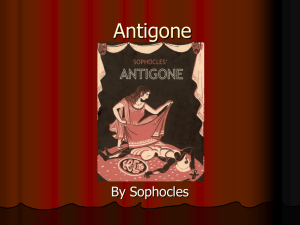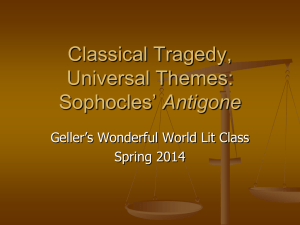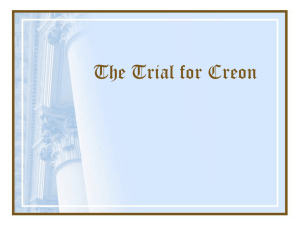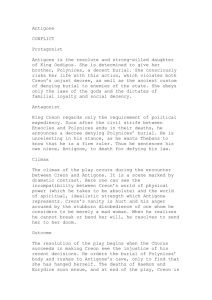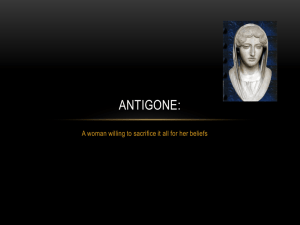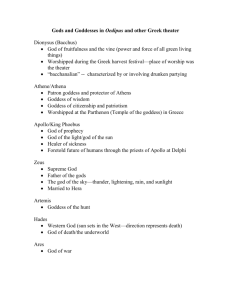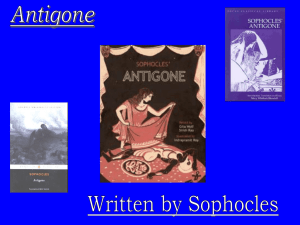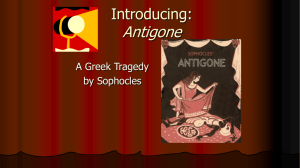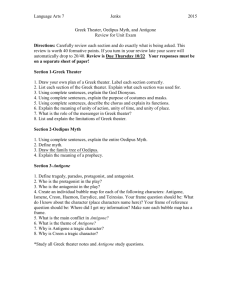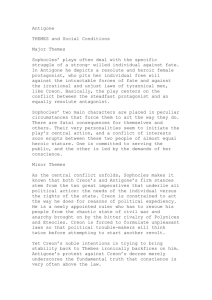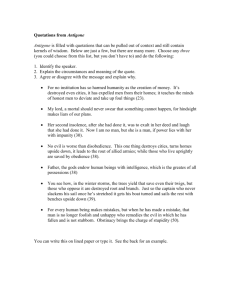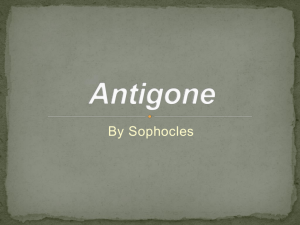Antigone
advertisement
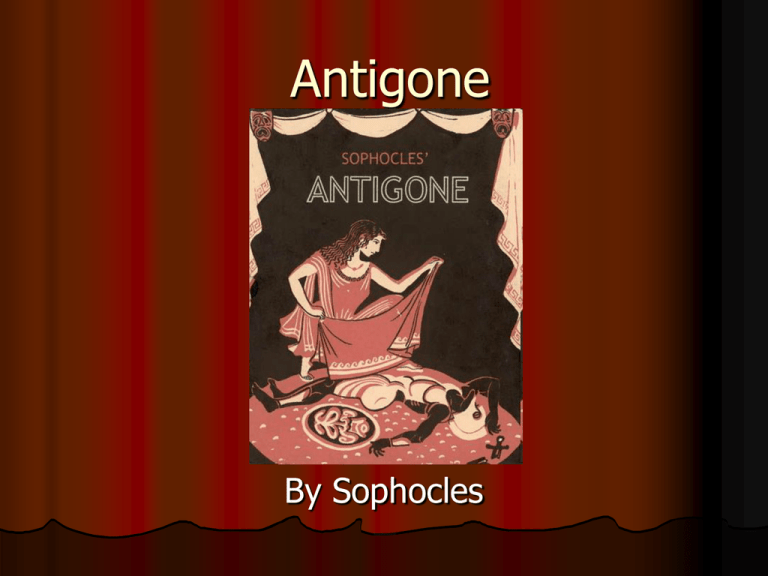
Antigone By Sophocles Background Written by Sophocles Text written in 441 B.C. Third in the Theban Plays Trilogy Written before Oedipus the King and Oedipus at Colonus Sophocles Themes Sins of the father are the sins of the child Loyalty Religious v. Political duty Tyranny v. Democracy Indifference v. Awareness Conformity v. Individuality Law v. Morality Free will v. Fate Democracy v. Autocracy Feminism v. Male power structure Individual v. State Conscience v. Law Cast of Characters Antigone Creon Ismene Eurydice Haemon Teiresias Polynices/Eteocles Antigone and Creon Protagonist and Antagonist Antigone and Ismene Creon After Oedipus learns the truth and leaves Thebes… His two sons Polynices and Eteocles fight with each other for the right to rule Thebes. Eteocles stays in the city while Polynices with the help of foreign kings, tries to conquer Thebes. The two brothers kill each other in battle and now the king is Creon, their uncle. As the new king Creon… Decides that since Eteocles stayed in Thebes he should be considered the defender of the city and as such be buried as a hero While Polynices, having sought the help of foreigners, should be considered an enemy of the state and as such Creon orders that he not be buried Antigone’s choice Creon the king and Theban law says that Polynices is a traitor and as such can not be buried Antigone’s conscience and religion tell her that it is against the law of the gods to leave a corpse unburied, and it is her duty as his sister to bury him Conscience and Responsibility What are Antigone’s responsibilities? What are her options? What is the price to pay? Greek Theater The Stage The Stage Three Main Portions of Greek Theatre: Skene – Portion of stage where actors performed (included 1-3 doors in and out) Orchestra – “Dancing Place” where chorus sang to the audience Theatron – Seating for audience The Parts of a Theater The Skene The large backdrop Could be decorated with scenery Where the action actually took place (hidden) Roof was accessible Originally one door in the center, but eventually had three doors The Skene The Theaters Theater of Dionysos Athens Main theater for tragedy 4th century remains c. 20,000 seats Located on side of Acropolis The Theaters Theater of Epidauros The best-preserved Largest surviving theater Located near Argos in the Peloponnesus Sanctuary of Aesclepius Still in use today Theater of Epidauros Greek Masks
